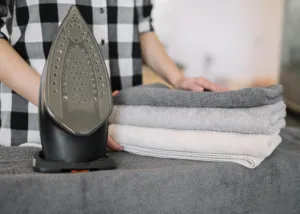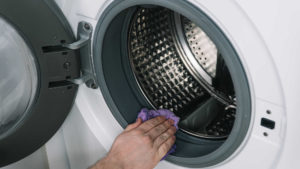Ironing clothes might seem like a mundane task, but getting it right can make a world of difference in your appearance. Like having fresh clothes from self service laundromats, achieving that crisp, wrinkle-free look doesn’t have to be a daunting challenge. In this comprehensive guide, we’ll walk you through the essential do’s and don’ts to iron clothes. Whether you’re preparing for a formal event or just want to look your best on a regular day, these tips will help you achieve a polished and professional appearance effortlessly.
Why Ironing Your Clothes is Essential?
In the fast-paced world we live in, first impressions count more than ever. As part of this, a well-ironed shirt enhances your overall look; it shows that you care about the details and take pride in your appearance. Furthermore, wearing ironed clothes is not just about for appearance – it’s about making a statement, boosting your confidence, and showing respect for yourself and others. So, the next time you’re tempted to skip the ironing, remember the numerous benefits it brings to your overall image and well-being.
Your Essential Checklist When Ironing Your Clothes
As discussed, having a wrinkle-free look with your clothes doesn’t only improve your physical appearance but also boosts your confidence. Thus, ironing your clothes is an integral day-to-day work you should do. To help you with that, here are the things you should take note of to iron clothes correctly:
-
Choose the Right Temperature Settings
Selecting the appropriate ironing temperature and setting is crucial to avoid damaging your clothes. Different fabrics require different heat levels. In addition to that, remember that every iron has a different set of settings and functions, which also vary depending on the device or brand of iron you’re using. To give you an overview, here’s a quick reference for a modern steam iron:
- Low Heat (1-2 dots): Delicate fabrics like silk and synthetics.
- Medium Heat (2-3 dots): Cotton blends, linen, and denim.
- High Heat (3-4 dots): Cotton, denim, and heavy materials.
-
Prepare a Clean Iron and Ironing Board
Before you begin, ensure you have the right equipment: a clean iron with a well-maintained soleplate and a stable ironing board. A dirty or sticky soleplate can leave residue on your clothes, so keep it clean by wiping it with a damp cloth.
-
Sort Your Clothes
Separate your clothes based on their fabric type and ironing needs. Group similar items together to streamline the process and prevent unnecessary temperature adjustments. One way to do this is to separate shirts that require low temperature, medium temperature, or intensive hot ironing.
-
Use Distilled Water
If your iron has a steam function, use distilled water to prevent mineral buildup that could clog the steam vents. The steam helps relax fabric fibres, making it easier to remove wrinkles. But if your iron doesn’t have a steam function, you can use a spray bottle to sprinkle a little water to iron shirts efficiently.
-
Iron Clothes Inside-Out
When you’re dealing with delicate fabrics or intricate prints, here’s a pro tip to keep them looking their best: flip them inside out before you bring out the iron. This simple yet effective technique acts as a shield against the direct heat that can potentially harm these sensitive materials. By giving them this extra layer of protection, you’re not only preserving the fabric’s integrity but also ensuring that those captivating prints stay as vibrant as ever.


-
Beware of Embellishments
When ironing shirts adorned with charming embellishments like beads, sequins, or appliqués, be cautious of direct heat. To preserve their beauty, use a pressing cloth and glide the iron around these delicate areas. Keep the magic intact while maintaining your shirt’s unique charm.
-
Test a Small Area
Make sure to pause before you try to iron your entire garments; test a small, inconspicuous area to ensure the fabric can withstand the heat. This becomes golden advice when handling the likes of silk or satin. Just choose a discreet nook, let the iron’s warmth whisper over it, and observe. If the fabric stands strong, your ironing adventure can unfold. But if doubt flutters in, a gentler approach might be wiser.
-
Ironing Clothes in the Right Order
Start ironing by thinking about this simple rule: start low, then go high. Think of it as a friendly temperature progression. Why? Well, let’s talk delicate fabrics; they deserve our utmost care. When you kick off with garments that crave gentler warmth, you’re giving them the TLC they need. And as you gradually work your way up to those that demand more heat, you’re ensuring that any lingering warmth won’t turn into an accidental scorching session. It’s like a safety nett for your fabrics, promising a wrinkle-free world without any unwanted surprises.
-
Store Properly After Ironing
Allow your clothes to cool and set for a few minutes before wearing or storing them. Hanging your newly ironed clothes and iron pants on hangers or folding them neatly helps maintain their freshly pressed appearance.


Things to Avoid While Ironing Your Clothes
Even with the best intentions, there are a few common mistakes that can lead to less-than-desirable results when ironing your clothes. Here’s what you should avoid:
- Using high heat on delicate fabrics. Avoid using high heat settings on fabrics like silk, satin, or synthetics. High heat setting can cause these materials to burn, melt, or lose their original texture.
- Leaving the iron unattended. Never leave a hot iron unattended. This can not only lead to accidents but also cause damage to your clothes or ironing board. Ensure to cool iron before leaving, or check the cool setting of your iron if needed.
- Overloading the ironing board. Overloading the ironing board with too much fabric can lead to uneven pressure and ineffective ironing. Iron one garment at a time is one of the best ironing techniques to achieve best results.
- Ignoring the care labels. Always check the care labels on your clothes for ironing instructions. Ignoring these guidelines can result in irreversible damage.
- Using starch excessively. While starch can give your clothes a crisp finish, using it excessively can cause buildup on the iron’s soleplate. Use starch sparingly and follow the manufacturer’s instructions.
- Rushing through the process. Ironing requires patience and attention to detail. Rushing through the process can result in missed wrinkles or accidental damage.


Stepping Out with Confidence and Style
Mastering the art of ironing your clothes is a valuable skill that can save you time and money while ensuring you always look your best. By following these essential do’s and don’ts, you can achieve a polished, professional appearance without the stress. Remember to choose the right temperature, sort your clothes, and use steam wisely. With these tips in mind, you’ll be well-equipped to tackle even the trickiest fabrics with confidence.
Aside from ironing, part of achieving a good appearance is having well-washed clothes. So, if you’re looking for a hassle-free way to clean your clothes, visit a Liquid Laundromats near you and enjoy our self-service laundromats. Step out full of confidence with your clean, ironed, and fresh clothes with Liquid Laundromats!
Further reading










